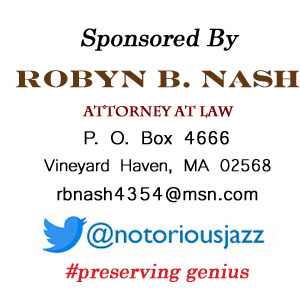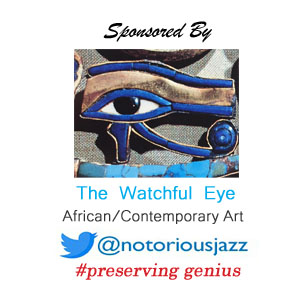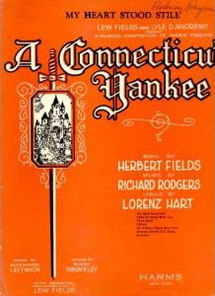
From Broadway To 52nd Street
A Connecticut Yankee opened on November 3, 1927 in the Vanderbilt Theatre and ran for four hundred and eighteen performances starring William Gaxton, Constance Carpenter and Nana Bryant.Richard Rodgers and Lorenz Hart composed the music for this delightful romp and from the body of music came two jazz standards Thou Swell and My Heart Stood Still. Based on the Mark Twain fantasy.
The Story: A modern man is thrust back to King Arthur’s Court in a dream caused by a blow to the head given by his fiancée for flirting with a girl. In his dream appear all the people important in his life, each taking on the personality he perceives in real life. While at court he falls in love with the girl, his attempts to woo her are thwarted by Merlin and Morgan le Fay. When he awakens he leaves his fiancée and decides to marry the girl.
Jazz History: Four clubs were pivotal in setting up The Street. 21 brought glamour, high society, top politicians and the columnists who spread the fame of The Street. Tony’s at No. 57-59 attracted the literary and theater set of the famous Algonquin Roundtable. At No. 33 Leon & Eddie became home for the tourists, cloak and suiters and show biz folk who couldn’t make it at 21 or Tony’s. At Joe Helbeck’s Onyx, originally an “in” spot for studio musicians at No. 35 triggered the awareness and influx of the public through its song hits.
In the early thirties, humorist Robert Benchley along with Jack Kriendler, one of the founder-owners of 21 drank their way west to 6th Avenue and back up the even numbered side of the street east to 5th counting the number of speakeasies and coming up with no less than 38.
Sponsored By
www.whatissuitetabu.com
More Posts: broadway
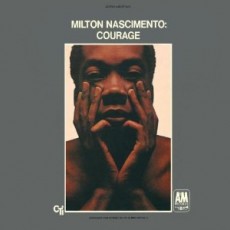
Daily Dose Of Jazz…
Milton Nascimento was born October 26, 1942 in Rio de Janiero, Brazil and as a baby was adopted by his mother’s former employers after her death when he was just 18 months. Growing up in Três Pontas, Minas Gerais he would soon become an occasional deejay on a radio station that his father once ran.
In the early stages of his career, Nascimento played in two samba groups: Evolussamba and Sambacana. By 1963, he moved to Belo Horizonte, struck a friendship with Lô Borges led to the Clube de Esquina (“corner club”) movement that included Beto Guedes, Toninho Horta, Wagner Tiso, and Flávio Venturini, with whom he shared compositions and melodies. One composition was “Canção do Sal”, which was first interpreted by Elis Regina in 1966 and led to a television appearance with Nascimento. A subsequent collective released Clube da Esquina in 1972 with several hit singles.
Famous for his falsetto and tonal range, Nascimento is regarded for his highly acclaimed songs such as “Maria, Maria”, “Canção da América” (“Song from America”/”Unencounter”), “Travessia”, “Bailes da Vida” and “Coração de Estudante” (“Student’s Heart”). The lyrics often social and political in nature have become hymns for both campaigns and funerals.
Milton’s international breakthrough came with his appearance on jazz saxophonist Wayne Shorter’s 1974 album “Native Dancer” that led to widespread acclaim. Collaborations with stars such as Paul Simon, Cat Stevens, George Duke, Quincy Jones and Earth, Wind and Fire would follow. Angelus, released in 1994 features appearances by Pat Metheny, Ron Carter, Herbie Hancock, Jack DeJohnette, Nana Vasconcelos, Jon Anderson, James Taylor, Peter Gabriel and Duran Duran.
Nascimento contributed the song “Dancing” to the AIDS-Benefit Album “Red Hot + Rio”, worked with the Brazilian Heavy Metal band Angra, and collaborated with Jason Mraz on the latter’s album. The singer/songwriter and guitarist has recorded over two-dozen albums and continues to record, perform and tour.

Daily Dose Of Jazz…
Roberto Menescal was born on October 25, 1937 in Vitoria (ES) Brazil and by eighteen the guitarist and vocalist was making his debut as a professional along with Elis Regina, Silvia Telles and others. By the late 50s he spawned a brilliant career as a composer being in good company with Carlos Lyra, Tom Jobim and Ronaldo Boscoli.
Menescal was important to the founding of the Bossa Nova movement in which many of his songs are references to the sea, such as his best-known composition “O Barquinho” (“Little Boat”). He was one of the musicians who promoted the swing of bossa nova around the world with his compositions “The Barquinho”, “You” and “We and the Sea” and was a part of the famous 1962 Bossa Nova Concert at Carnegie Hall in New York City.
Choosing to return to Brazil to raise a family, his fame is mostly relegated to his home country and with bossa nova fans around the world. Roberto very easily moves between musical mediums playing Latin, Brazilian pop, Musica Popular Brasiliera, Bossa Nova and Samba. He provided music for the film Bye Bye Brasil and was nominated for a Latin Grammy for his work with his son’s bossa group Bossacucanova in 2002.
With a career spanning over 50 years, he has worked with the likes of Paul Winter, Toots Thielemans, Herbie Mann, Lucio Alves, Caetano Veloso, Joao Bosco, Maysa and Alcione. Donning his producer and arranger hats he has recorded Elis Regina, Leila Pinheiro, Wanda Sa, Chico Buarque, Emilio Santiago, Fagner, Gal Costa, Nara Lion, Jeanne, Ivan Lins and Oswaldo Montenegro who are a fraction of a long list of artists.
From 1970 to 1985, Menescal was at Polygram Records as producer, director and general manager but left to found his own production company – Albatross. Since the late Nineties he has been a part of “Tokyo-River Road” to Japan, was musical director for “Nara – A Lady Say” that ran five months in Rio de Janiero, and released a three instrumental CD “Zen” set of bossa nova, bolero and jazz.
In 2008 Roberto not only celebrated his 50 years of bossa nova but also the 50th anniversary of the music genre. That same year he was the musical director for the show “50 Years of Bossa Nova” held on Ipanema Beach to an audience of over 60,000 people. Composer, producer, arranger, guitarist and vocalist Roberto Menescal is also an educator, who between performances and recordings conducts numerous workshops at universities, conferences and musical events around the world.

Daily Dose Of Jazz…
Anthony Cox was born October 24, 1954 in Minneapolis, Minnesota. He matriculated through the University of Wisconsin – Eau Claire studying and honing his craft of playing bass. After graduating from college he spent time in New York before returning to the Twin Cities.
Cox plays mainly in the post-bop, avant-garde and traditional styles, though versatile enough to work in any style effectively. His bass sound is full of beauty and warmth and his ability to accompany and still add very creative ideas into whatever music he is playing is remarkable.
Equally proficient on the upright acoustic bass, electric guitar and the Spanish style acoustic bass guitar, Anthony is also an adept composer open to all kinds of music from around the world and can be heard as a leader or as a sideman on over a hundred recording sessions with such artists as Geri Allen, Dewey Redman, Dave Douglas, John Scofield, Pat Metheny, Billy Higgins, Uri Caine, Gary Thomas, Marty Ehrlich, Ed Blackwell, Joe Lovano and Dave King.
Bassist Anthony Cox currently resides and performs in his hometown and is attracting a young audience with his full, warm sound and creative ideas.
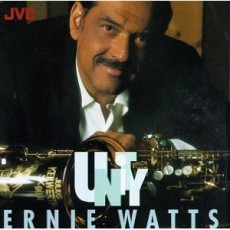
Daily Dose Of Jazz…
Ernie Watts was born Ernest James Watts on October 23, 1945 in Norfolk, Virginia. He began playing saxophone at thirteen, attended West Chester University and later matriculated through Berklee College of Music on a Downbeat scholarship. He toured with Buddy Rich in the mid-1960s, occupying one of the alto saxophone chairs along with Lou Marini.
Watts visited Africa on a US State Department tour with Oliver Nelson’s group, played tenor saxophone with the Tonight Show Band under Doc Severinsen for twenty years and was a featured soloist on many of Marvin Gaye’s original Motown albums during the 1970s. A first-call musician he has sat in on many other pop and R&B sessions during 25 years in the studios in Los Angeles.
By the mid-1980s Ernie decided to rededicate himself to jazz, recording and touring with German guitarist and composer Torsten de Winkel, drummer Steve Smith and keyboardist Tom Coster. He would join bassist Charlie Haden’s Quartet West, play saxophone on the Grease soundtrack, clarinet on The Color Purple and sax on the opening theme song of the popular 80s sitcom Night Court.
Watts has won two Grammy Awards as an instrumentalist, toured with the Rolling Stones, appeared in the 1982 film Let’s Spend The Night Together, was featured on Kurt Elling’s 2010 Grammy-winning album Dedicated To You, formed his own label Flying Dutchman Records, and tours Europe with his quartet.
With flute added to his instrument list, saxophonist Ernie Watts has released eighteen albums as a leader and nearly three dozen as a sideman working with Billy and Bobby Alessi, Paul Anka, Wilie Bobo, Brass Fever, Kenny Burrell, Donald Byrd, Stanley Clarke, Billy Cobham, Randy Crawford, Dizzy Gillespie, Bobby Hutcherson, Milt Jackson, Carol King, John Mayall, Blue Mitchell, New Stories, Lalo Schifrin and Gabor Szabo among others. He continues to perform record and tour.



